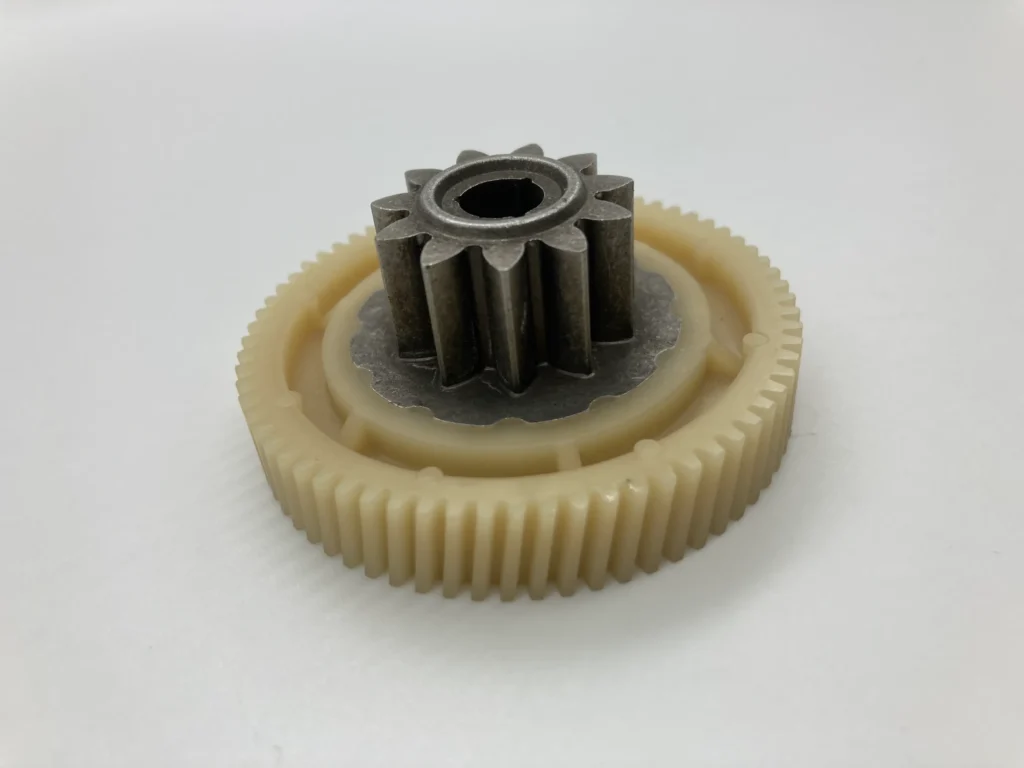Plastic gears have become increasingly popular in various industries due to their unique advantages over traditional metal gears. This comprehensive guide will explore the structure, design, manufacturing processes, materials, types, benefits, disadvantages, and applications of plastic gears.
Designing plastic gears requires careful consideration of various factors to ensure optimal performance and longevity. Key design aspects include:
Allowance for clearance between mating gear teeth to accommodate thermal expansion and manufacturing tolerances.
Rounded fillets reduce stress concentrations and improve fatigue life.
Several processes are used to manufacture plastic gears, each with its own advantages and limitations:
Materials Used in Plastic Gears
Nylon (Polyamide) Gear:
High strength and wear resistance.
Good chemical resistance.
Commonly used for high-load applications.
Acetal (Polyoxymethylene, POM) Gear:
Low friction and high stiffness.
Excellent dimensional stability.
Suitable for precision gears.
Polycarbonate Gear:
High impact resistance.
Good thermal stability.
Used in applications requiring transparency and toughness.
Polyethylene and Polypropylene Gear:
Low cost and lightweight.
Good chemical resistance.
Used in low-load and non-critical applications.
Thermoplastic Polyurethane (TPU) Gear:
High elasticity and toughness.
Good abrasion resistance.
Used in flexible and high-impact applications.
Types of Plastic Gears
Simple and most common type,such as small plastic gears,Large plastic gears.
Straight teeth parallel to the axis of rotation.
Teeth are cut at an angle.
Smoother and quieter operation.
Conical shape used for intersecting shafts.
Can be straight or spiral teeth.
Used for high reduction ratios.
Consists of a worm and a worm wheel.
Plastic Planetary Gears:
Complex system with high torque capacity.
Used in compact and high-efficiency applications.
Benefits of Plastic Gears
Lightweight:
Reduces the overall weight of machinery.
Easier to handle and install.
Corrosion Resistance:
Unaffected by moisture and chemicals.
Ideal for harsh environments.
Low Noise and Vibration:
Absorbs shocks and dampens vibrations.
Quieter operation compared to metal gears.
Cost-Effective:
Lower material and production costs.
Economical for high-volume production.
Self-Lubricating:
Many plastics have low friction coefficients.
Reduces the need for external lubricants.
Disadvantages of Plastic Gears
Limited Load Capacity:
Not suitable for very high-load applications.
May deform under excessive stress.
Thermal Expansion:
Sensitive to temperature changes.
Can lead to dimensional instability.
Lower Wear Resistance:
May wear faster than metal gears in abrasive environments.
Requires careful material selection and design.
Moisture Absorption:
Some plastics can absorb moisture and swell.
Affects dimensional stability and performance.
Applications of Plastic Gears
Automotive:
Instrument clusters, air conditioning systems, and actuators.
Reduces weight and noise in vehicles.
Consumer Electronics:
Printers, cameras, and toys.
Provides cost-effective and precise motion control.
Medical Devices:
Infusion pumps, diagnostic equipment, and prosthetics.
Benefits from corrosion resistance and biocompatibility.
Industrial Machinery:
Conveyors, packaging machines, and textile machinery.
Lightweight gears reduce wear on other components.
Aerospace:
Cabin equipment, seating mechanisms, and drones.
Contributes to weight savings and fuel efficiency.
Home Appliances:
Washing machines, dishwashers, and blenders.
Ensures quiet and reliable operation.
Top-Brands of Plastic gears manufacturer in the world
Here are some well-known brands and companies involved in the manufacturing of plastic gears globally:
KHK Gears: Based in Japan, KHK Gears is renowned for its extensive range of standard and custom plastic gears, serving various industries worldwide.
Gleason Corporation: An American company known for producing high-quality gears, including plastic gears, with advanced manufacturing technologies.
Igus: A German manufacturer that produces a wide array of plastic gears and components, focusing on high-performance, lubrication-free solutions.
Misumi: A global manufacturer and distributor offering a diverse selection of plastic gears, known for their precision and customization options.
Martin Sprocket & Gear: An American company with a long history of producing various gears, including plastic gears, catering to multiple industries.
Stock Drive Products/Sterling Instrument (SDP/SI): A US-based manufacturer providing a broad range of plastic gears, known for their quality and engineering support.
GKN Powder Metallurgy: While primarily known for metal gears, GKN also produces high-performance plastic gears for specific applications.
Bervina: A Hungarian company specializing in the production of precision plastic gears and timing belt pulleys.
Nordex: An American manufacturer offering a variety of plastic gears, known for their precision and engineering expertise.
These companies are renowned for their innovation, quality, and extensive product lines, catering to a wide range of applications across different industries.
Plastic gears offer a versatile and cost-effective solution for many applications across various industries. Understanding their design, manufacturing processes, materials, types, benefits, disadvantages, and applications is crucial for selecting the right gear for your needs. As technology advances, the performance and capabilities of plastic gears continue to improve, making them an increasingly viable option for more demanding applications.


Hi there! Do you use Twitter? I’d like to follow you if that would be ok. I’m definitely enjoying your blog and look forward to new updates.